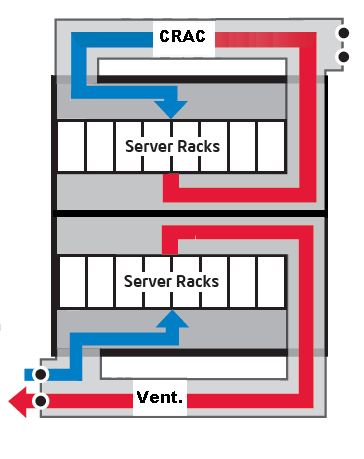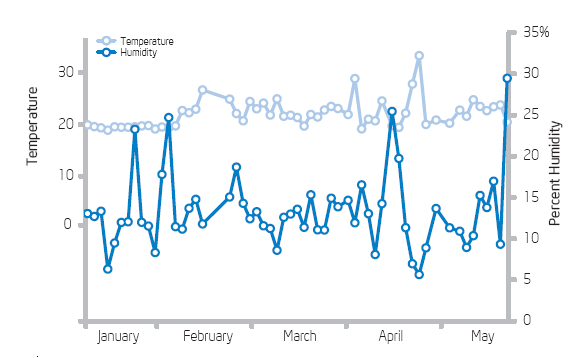Send us a message if your organization is not included.
Organizations
Climate Savers Computing
Started by Google and Intel in 2007, the Climate Savers Computing Initiative is a nonprofit group of eco-conscious consumers, businesses and conservation organizations.
Cebit
Green IT at CeBIT is a forum designed to put the ICT industry in touch with the relevant aspects of climate protection. All companies, institutions and initiatives which are able to make a contribution towards reducing CO2 emissions in the ICT industry are invited to take part at the green IT platform at CeBIT.
Dot Green
Green IT consultancy.
EPA
Green information technology, or Green IT, brings environmental thinking to the world of information technology. EPA encourages you to consider how the environment may be affected by your IT-related decisions. Find out what types of IT products are made using environmentally-friendly processes. Learn how to make the IT you have more energy efficient.
Electronic Products Environmental Assessment Tool
EPEAT is a system to help purchasers in the public and private sectors evaluate, compare and select desktop computers, notebooks and monitors based on their environmental attributes.
Green Lounge
Green portal.
Greenercomputing
This site focuses on the environmental concerns of information technology professionals, covering such topics as energy efficiency, hazardous materials reduction, and disposal and end-of-life issues. Its free e-newsletter, GreenerComputing News, offers the latest news, tools, and resources on these topics.
Greener-ICT
Green IT Blog.
The Green Grid
Vendor information sharing initiative.
GreenIT
GreenIT® Inc. is a progressive consultancy that is the leading advisor in the emerging field of environmentally sustainable Information and Communications Technology systems.
Green Computing Impact Organization (GCIO)
Formed by a group of Global-minded IT executives, Green Computing Impact Organization (GCIO) was created to be an active participant in transforming the IT community from an environmental liability to an Earth conscious example of responsibility.
Green ICT.org
Stichting GreenICT is een onafhankelijke non-profit organisatie werkzaam op het snijvlak van ICT en duurzaamheid. Onze focus ligt op duurzame ICT. Hiermee onderscheiden wij ons dan ook direct van andere organisaties die ICT en duurzaamheid combineren.
The Uptime Institute
The Uptime Institute is a cooperative platform for information sharing on optimizing datacenter management. It has a special focus on energy consumption and organizes and dissemiantes information that will help improving datacenter efficiency.
Vendor initiatives
Accenture
Dell
Fujitsu/Siemens
HP DSC
IBM
Wipro
Power analysis and monitoring
Power Assure
EPI
Rackwise
Nlyte
MoabGreen Data Systems
Datacenter resources
SynapsSense LiveImaging(tm)
 Het temperatuur bereik De high perfromance high density servers (~230 W per blade) ontvangen doorgaans een lucht toevoer van rond de 20 graden, die door de balde met 32 graden wordt verhoogd tot 52 graden. In de gangbare situatie waarin de lucht intern circuleert betekend dit dat de AC deze lucht weer 32 graden in temperatuur moet verlagen. Dit vergt doorgaans een vergelijkbaar vermogens budget, de reden waarom datacenters zoveel energie gebruiken. Als we de temperatuur niet op exact 20 graden maar in een range van 20 tot 32 graden zouden laten fluctueren, dan betekend dit dat een AC veel minder zou hoeven te werken. De hardware specificaties laten het toe, dus Intel deed de test. In het CRAC gekoelde datacenter werd de lucht op 20 graden gehouden, in het geventileerde datacenter werd deze binnen het bereik gehouden. Dat betekende dat op warme dagen de temperatuur van de toevoerlucht tot 32 graden kon oplopen. Als de toevoerluchttemperatuur daalde onder de 20 graden dan werd deze bijgewarmd met warme lucht uit het datacenter. Het luchtvochtigheids bereik In het CRAC datacenter werd de luchtvochtigheid bewaakt door de CRAC. Normaal gesproken word een luchtvochtigheid nagestreefd tussen de 40% en 55% om schade door statische electriciteit of kortsluitingen te voorkomen. In de geventileerde variant werd geen luchtvochtigheids conditionering toegepast. Hierdoor schommelde deze soms wild, maar enige negatieve gevolgen hiervan bleken niet significant.
Het temperatuur bereik De high perfromance high density servers (~230 W per blade) ontvangen doorgaans een lucht toevoer van rond de 20 graden, die door de balde met 32 graden wordt verhoogd tot 52 graden. In de gangbare situatie waarin de lucht intern circuleert betekend dit dat de AC deze lucht weer 32 graden in temperatuur moet verlagen. Dit vergt doorgaans een vergelijkbaar vermogens budget, de reden waarom datacenters zoveel energie gebruiken. Als we de temperatuur niet op exact 20 graden maar in een range van 20 tot 32 graden zouden laten fluctueren, dan betekend dit dat een AC veel minder zou hoeven te werken. De hardware specificaties laten het toe, dus Intel deed de test. In het CRAC gekoelde datacenter werd de lucht op 20 graden gehouden, in het geventileerde datacenter werd deze binnen het bereik gehouden. Dat betekende dat op warme dagen de temperatuur van de toevoerlucht tot 32 graden kon oplopen. Als de toevoerluchttemperatuur daalde onder de 20 graden dan werd deze bijgewarmd met warme lucht uit het datacenter. Het luchtvochtigheids bereik In het CRAC datacenter werd de luchtvochtigheid bewaakt door de CRAC. Normaal gesproken word een luchtvochtigheid nagestreefd tussen de 40% en 55% om schade door statische electriciteit of kortsluitingen te voorkomen. In de geventileerde variant werd geen luchtvochtigheids conditionering toegepast. Hierdoor schommelde deze soms wild, maar enige negatieve gevolgen hiervan bleken niet significant.  Luchtzuiverheid In het CRAC datacenter werd de lucht gefilterd zoals gebruikelijk. In het geventileerde datacenter werd slechts een standaard luchtfilter gebruikt. Fijne deeltjes konden zodoende met de buitenlucht het datacenter binnenstromen. Dit resulteerde in zichtbare stof ophoping. Ten behoeve van het experiment werd dit alles zo gelaten. Server falen De primare functie van een koeling en ventilatie systeem van een datacenter is om het functioneren van de hardware te garanderen. Oververhitting leidt tot het uitvallen van capacitiet, en om deze te garanderen wordt gekoeld, bevochtigd en gezuiverd. In dit experiment van Intel blijkt dat de temperaturen waaronder hardware betrouwbaar kan functioneren beduidend hoger liggen dan wordt aangenomen. Intel vergelijkt de de defect percentages (server blades) van de eigen data centers 3.83%, het CRAC ‘datacenter’ 2.45% , en het geventileerde ‘datacenter’ 4.46% een toename van 16% (in de periode van 10 maanden). Energie Het energiegebruik van het geventileerde datacenter verschilt dramatisch van dat met de standaard CRAC opzet. Dit komt doordat een groot deel van het energiebudget in een datacenter opgaat aan koeling en aanverwante voorzieningen. Voor elke Watt die servers gebruiken gaan twee Watts verloren aan koeling en het omvormen en stabiliseren van de electriciteitstoevoer.
Luchtzuiverheid In het CRAC datacenter werd de lucht gefilterd zoals gebruikelijk. In het geventileerde datacenter werd slechts een standaard luchtfilter gebruikt. Fijne deeltjes konden zodoende met de buitenlucht het datacenter binnenstromen. Dit resulteerde in zichtbare stof ophoping. Ten behoeve van het experiment werd dit alles zo gelaten. Server falen De primare functie van een koeling en ventilatie systeem van een datacenter is om het functioneren van de hardware te garanderen. Oververhitting leidt tot het uitvallen van capacitiet, en om deze te garanderen wordt gekoeld, bevochtigd en gezuiverd. In dit experiment van Intel blijkt dat de temperaturen waaronder hardware betrouwbaar kan functioneren beduidend hoger liggen dan wordt aangenomen. Intel vergelijkt de de defect percentages (server blades) van de eigen data centers 3.83%, het CRAC ‘datacenter’ 2.45% , en het geventileerde ‘datacenter’ 4.46% een toename van 16% (in de periode van 10 maanden). Energie Het energiegebruik van het geventileerde datacenter verschilt dramatisch van dat met de standaard CRAC opzet. Dit komt doordat een groot deel van het energiebudget in een datacenter opgaat aan koeling en aanverwante voorzieningen. Voor elke Watt die servers gebruiken gaan twee Watts verloren aan koeling en het omvormen en stabiliseren van de electriciteitstoevoer.  Intel berekent dat in hun geval de geventileerde variant een besparing van 67% op het energie gebruik voor de koeling zou opleveren. De in het experiment gebruikte setup zou met 7ct per Kwh en met een koeling energie gebruik= server energie gebruik aanname al een besparing van rond de 60.000 Euro op jaarbasis opleveren. Haken en ogen De geschetste situatie is niet nieuw, SUN werkt al enige tijd met een hogere temperatuur in nieuwe datacenters (
Intel berekent dat in hun geval de geventileerde variant een besparing van 67% op het energie gebruik voor de koeling zou opleveren. De in het experiment gebruikte setup zou met 7ct per Kwh en met een koeling energie gebruik= server energie gebruik aanname al een besparing van rond de 60.000 Euro op jaarbasis opleveren. Haken en ogen De geschetste situatie is niet nieuw, SUN werkt al enige tijd met een hogere temperatuur in nieuwe datacenters (